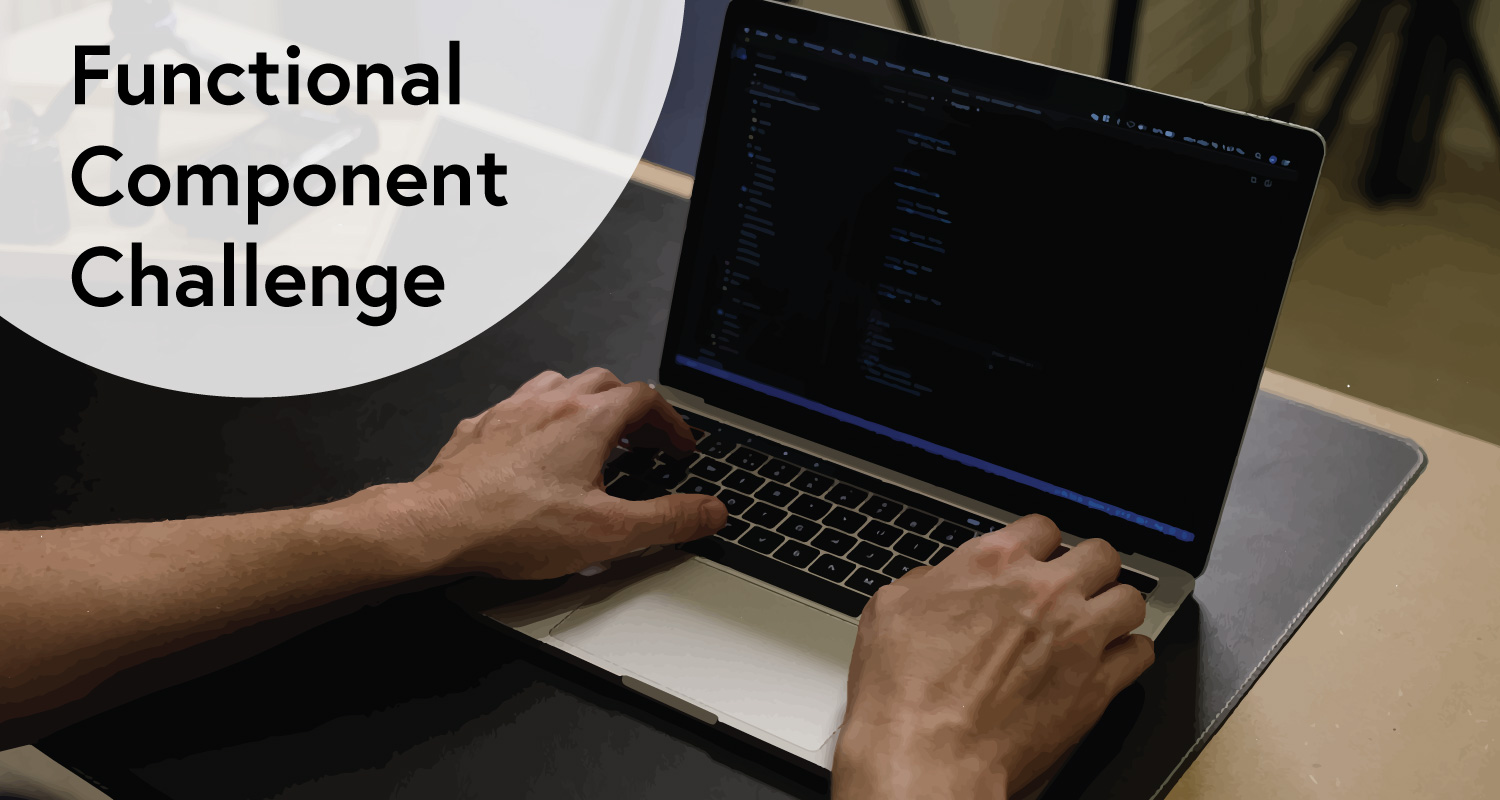Functional Component Challenge - Part 1
I’ve taken the challenge recently to use only functional components in my code-along sessions even when the instructor uses class components Since I’ve gotten more experience with React Hooks, I’ve decided that they’re a much better coding experience than class components. I’ve vowed to code only using functional components when doing React projects now. Along with using only functional components I am also learning how to make the most of different hooks. At this point, I’m fairly comfortable with the useState hook. I’m getting more comfortable with the useEffect hook, although there’s some particular cases that I’m still figuring out.

Basics of a Functional Component
A functional component is called by simply writing a function. The JSX is placed in a return statement. Everything else, including all the programming logic, can be placed before the return statement. Functional components - before React Hooks - were used mostly for things like content that didn’t require state and for purely presentational needs - like displaying HTML. Functional components also are able to have props and data sent along to them from other components.
An example of the typical functional component could be the following - for a header section of a website.
import React from 'react';
const Header = () => {
return (
<nav>
Header Content - including icon, site title, navigational links
</nav>
)
}
export default Header
With React Hooks, it’s possible to add in state to a functional component with the useState hook. This allows the component to handle state and changes to it inside the component, without having to rely on a class component to do the work.
import React, { useState } from 'react'
const User = () => {
const [loggedIn, setLoggedIn] = useState(false);
return (
<div>
{loggedIn ?
(
<p>You are currently logged in</p>
) : (
<p>Please log in to continue</p>
)}
</div>
)
}
export default User
Another great thing about React Hooks and functional components is the ability to have user input in the component and handle stateful changes to the user input. It’s a tidy amount of code too, reducing the number of lines it takes to do the same thing with a class component.
import React, { useState } from 'react'
const Location = () => {
const [location, setLocation] = useState('');
const handleChange = event => {
setLocation(event.target.value)
}
return (
<div>
<p>
<strong>My current location is:</strong> {location}
</p>
<input type='text' onChange={handleChange} />
</div>
)
}
export default Location
Part 2 will explore how to handle the equivalent of lifecycle methods in functional components.
